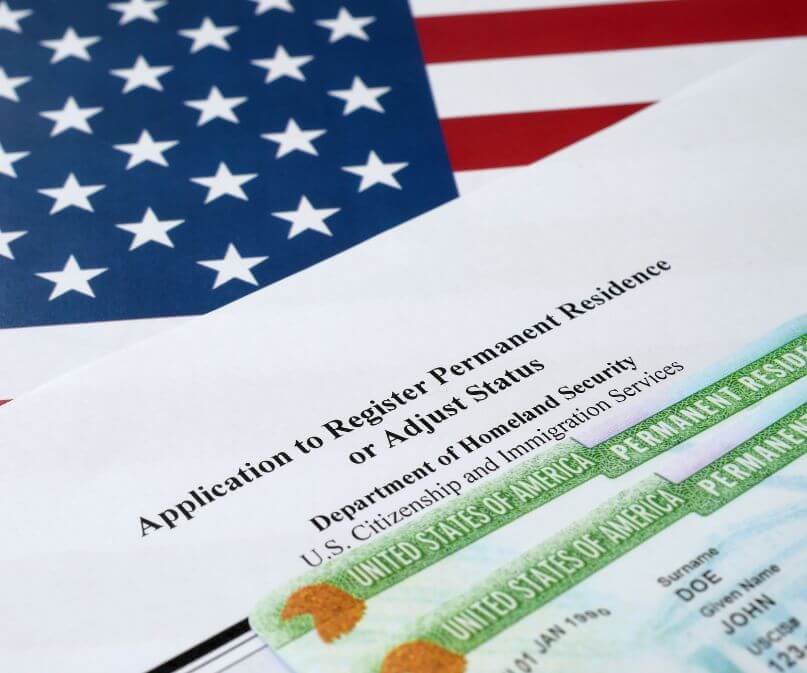
Green Card – Permanent Residency
The steps to becoming a Green Card holder (permanent resident) vary by category and depend on whether you currently live inside or outside the United States. The main categories are:
- Green Card Through Family
- Green Card Through a Job
- Green Card Through Refugee or Asylee Status
- Other Ways to Get a Green Card
If you are already a Green Card holder, you can:
- Renewing or replacing your Green Card
- Removing conditions on a Green Card
- Travel outside the United States
- Rights and responsibilities of Green Card holders
The Green Card Processes & Procedures:
- Green Card Eligibility: Learn who can apply for permanent residence
- Adjustment of Status: Learn about the multi-step process for individuals inside the United States who want to get a Green Card
- Consular Processing: Learn about the multi-step process for individuals outside the United States who want to get a Green Card
Who is a Green Card Holder (Permanent Resident)?
A Green Card holder (permanent resident) is someone who has been granted authorization to live and work in the United States on a permanent basis. As proof of that status, a person is granted a permanent resident card, commonly called a “Green Card.” You can become a permanent resident in several different ways. Most individuals are sponsored by a family member or employer in the United States. Other individuals may become permanent residents through refugee or asylee status or other humanitarian programs. In some cases, you may be eligible to file for yourself.
Permanent Visa or Green Cards
A permanent visa, commonly referred to as a “green card,” is an immigration document that allows a person to live in the United States.
What Agency Grants Green Cards?
Before September 2002, the agency that was charged with overseeing immigration issues was the Immigration and Naturalization Service (INS). In September 2002, Congress passed and President Bush signed the Homeland Security Act, transferring the powers of the INS to the Department of Homeland Security. The immigration service functions of the INS are now placed under the Bureau of Citizenship and Immigration Services (BCIS).
Types of Green Card
Depending on your connection to the United States, you may qualify for a different green card category. The United States puts a limit, or quota, on the amount of green cards issued for people who fall into each green card category:
- Immediate Family Members Visas – Immediate family members of U.S. citizens can qualify for a green card. This category of green cards is for those who are: Spouses of U.S. citizens
- Unmarried children under 21 with one U.S. citizen parent
- Parents of a U.S. citizen under 21
- Step children or step-parents of a U.S. citizen, depending on the age of the child
- Someone who adopted or was adopted by a U.S. citizen, depending on the age of the child at the time of adoption
- Marriage Visas – Marriage has special procedural rules. The BCIS can grant “conditional permanent residence” for those who are married to U.S. citizens while the full green card application process is completed.
- Work Visas – Those moving to the United States because of a certain type of skill for employment may qualify for a green card if they fall into one of the preference categories established by the United States government. These preference categories are very limited and specific about the criteria required to receive a green card. Further, quotas are established for each of these preference categories.
- Long-Term Illegal Residents – Some individuals who have resided illegally in the United States for a long period of time may be eligible for a green card if: The illegal resident’s immediate family members are U.S. citizens
- The immediate family members would suffer undue hardship were the illegal resident forced to leave
Beware – See your immigration attorney before attempting to get a green card through these methods. You may bring your illegal residence in the United States to the attention of the BCIS and be forced into deportation proceedings instead of getting a green card.
The Green Card Application Process
Getting your application for a green card processed and approved by the BCIS has many steps:
- Get a sponsor – A sponsor can be a relative who is a United States citizen or an employer
- Apply to a U.S. consulate or embassy in your home country – if you are already in the United States on a valid visa, you can apply here
- The BCIS will check to see if you are “inadmissible” – inadmissible is defined by many categories such as mental or physical disorders, a past conviction of a crime, or prior activity deemed subversive
Should I See an Immigration Attorney when I Apply for a Green Card?
The BCIS has many forms and procedural requirements for those who wish to apply for a green card. An immigration attorney is familiar with all these procedures and will help your application process move smoothly. An immigration attorney can also help you determine whether you would be eligible for a green card under a preference category or as an immediate family member.
Based in San Diego, Chula Vista and El Cajon, Immigration Lawyers at Law Offices of Hasbini specialize in immigrant and non-immigrant visa processing, U.S. permanent residence, green card, working visas, H-1B’s, business and investment visas, naturalization, corporate and business immigration, political asylum, as well as deportation and removal matters.
San Diego immigration lawyer Habib Hasbini and his associates truly understand what it takes to get our clients the legal help they deserve. By remaining open and honest with our clients, we are consistently able to provide the highest quality of care and service. We are familiar with the emotional investment clients make in the immigration process.
San Diego immigration defense lawyer Habib Hasbini and his associates combine personal experience, knowledge of the immigration system, and extensive legal experience to provide the immigration services you need.

